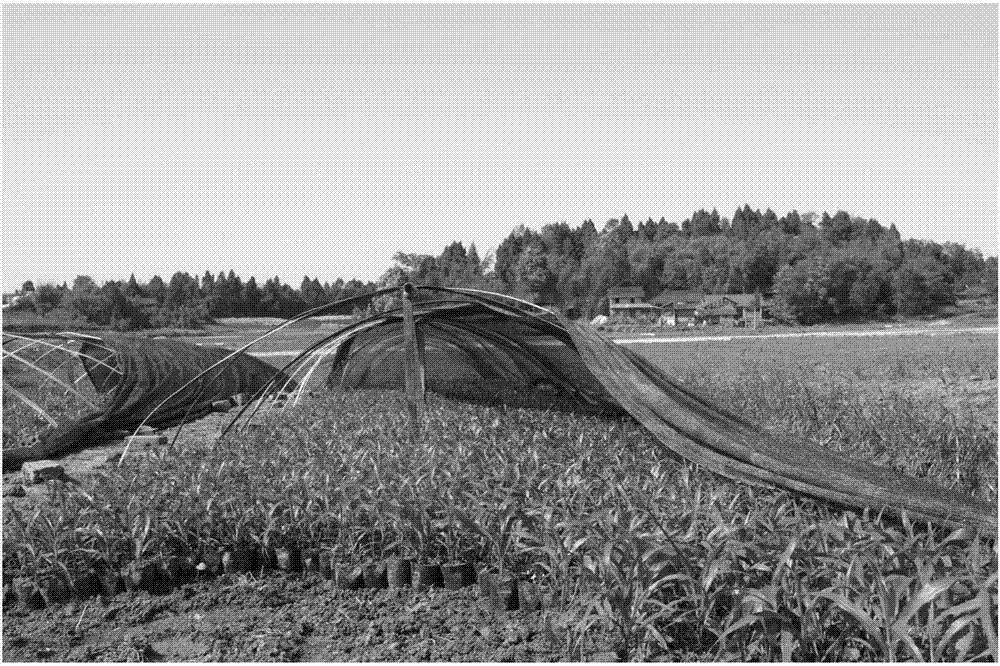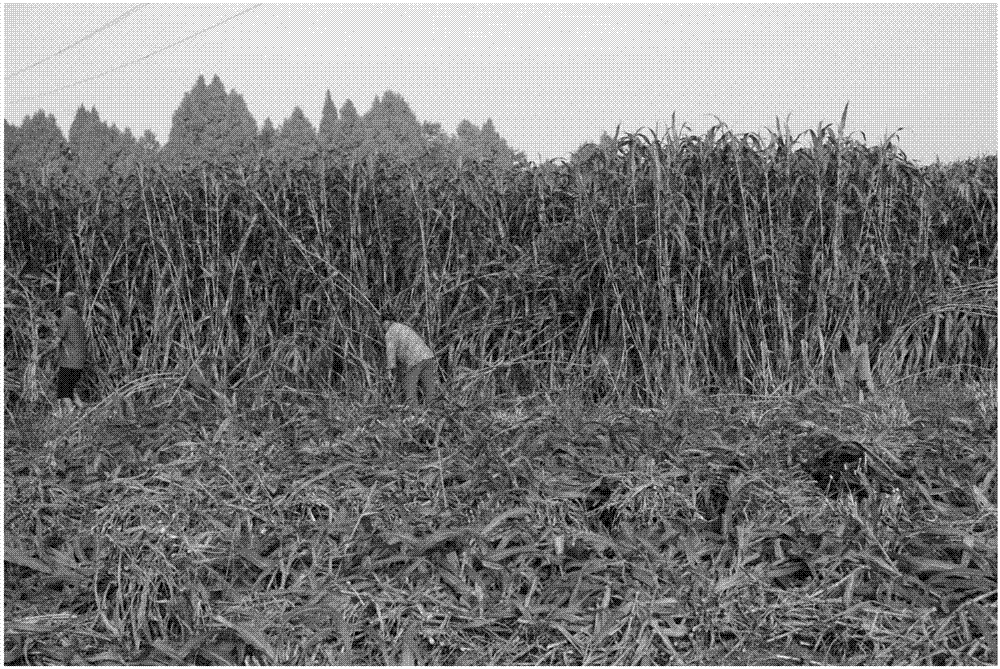Method for selectively breeding perennial coix lacryma-jobi for feeding by utilizing wild coix lacryma-jobi
A technology of wild coix and coix, which is applied in the direction of botany equipment and methods, applications, plant gene improvement, etc., can solve the problems of unseen selection and breeding of new forage grasses, achieve the effect of increasing selection pressure and selection efficiency, and accelerating the breeding process
- Summary
- Abstract
- Description
- Claims
- Application Information
AI Technical Summary
Problems solved by technology
Method used
Image
Examples
Embodiment 1
[0042] Embodiment 1, the propagation of seedling
[0043] In Jinghong City, Yunnan Province, in August every year, wild coix seeds are soaked in water for 10 days and then sown into seedling pots with a size of 10cm×10cm. After sowing, a small amount of phoxim granule is sprinkled to prevent cutworms and other underground pests. . When the seedlings grow to the "three leaves and one heart" stage, move them to the field, with a distance between plants and rows of 1m. At the booting stage, use a 200-mesh special pollen isolation net to isolate the plants in the plot to ensure sufficient freedom between and within the same plot. Pollination, prevent miscellaneous pollen. Mixed collection of plot seeds (if a certain type of coix seeds are collected in large quantities, the multiplication at this stage may not be carried out).
Embodiment 2
[0044] Embodiment 2, planting and screening of seedlings
[0045] In Jinghong City, Yunnan Province, in August every year, soak the Coix coix seeds expanded in the previous year in water for 10 days, and sow them in seedling pots with a size of 10cm×10cm ( figure 1 ), sprinkle a small amount of phoxim granules after sowing, prevent and control underground pests such as cutworms, record the number of seedlings every day after sowing, and select 30% of the single plants that emerge first. When the seedlings grow to the stage of "three leaves and one heart", they are transplanted to the field, and the spacing between plants and rows is 1m. Investigate the tiller number and plant height of each individual plant at the booting stage, multiply the plant height by the tiller number of each individual plant, and select the top 30% individual plants according to the score of each individual plant, and use a 200-mesh pollen isolation net for the selected individual plants Individual pl...
Embodiment 3
[0046] Embodiment 3, planting and screening of asexual seedlings
[0047] In Jinghong City, Yunnan Province, in January every year, the lines selected in the previous stage are harvested and the stems are propagated by cuttings. Each node is a seedling. When cutting, the distance between plants and rows is 10cm ( figure 2 ), the asexual seedlings were planted in the plot, the plot length was 10m, the width was 5m, and the distance between plants and rows was 1m. When the plants grew to 1m, they began to mow. After that, they were mowed once every 30 days, and the last time was mowed at the end of July. Cumulative grass yield of each line. Select the top 30% lines of cumulative grass yield.
PUM
 Login to View More
Login to View More Abstract
Description
Claims
Application Information
 Login to View More
Login to View More - R&D
- Intellectual Property
- Life Sciences
- Materials
- Tech Scout
- Unparalleled Data Quality
- Higher Quality Content
- 60% Fewer Hallucinations
Browse by: Latest US Patents, China's latest patents, Technical Efficacy Thesaurus, Application Domain, Technology Topic, Popular Technical Reports.
© 2025 PatSnap. All rights reserved.Legal|Privacy policy|Modern Slavery Act Transparency Statement|Sitemap|About US| Contact US: help@patsnap.com



